
About This Quiz
So, what's the deal with car logos, anyway? Did you know that nearly every car-brand logo has a secret behind it? Car logos not only instill comfort for the owners and pride for the manufacturer but they also often tell the history of their brand. From a star-filled Japanese skyline to ancient chemical symbols, you might be surprised that the manufacturer of your car may be providing an entire company history on the hood or grill of your vehicle as you travel 80 mph down the highway.
That's great and all, but would you be able to identify a car without its logo? The fact is that most people can't. Even cars as iconic as Mercedes-Benz "Gullwing" might give you room for pause as you wonder, "Is that a Mercedes? Maybe it's an older 'Vette, or... a Bentley?" So, it doesn't matter how curvy, sleek or sporty your vehicle is, without that four-inch emblem, people may always wonder what you're driving.
But you're better than that, aren't you? You're a roadster through-and-through. So, let's test out those driving skills and see if you're as good as you think. Can you figure out a Bentley from a Mercedes? Are you Ford tough? Is that a Scion or a Saturn? We're not here to trick you, but we are certain that some of these logos are tricky to figure out.

A true American muscle car, the Firebird Trans-Am was extremely popular in the United States and even played a major role in the movie Smokey and the Bandit. It was initially built by General Motors to compete with the popular Ford Mustang. Over one million units were sold between 1971 and 1981.

Since it was launched in 2005, the Bugatti Veyron has been the hypercar to beat. With a W16 quad-turbocharged engine, the Veyron produces over 1,000 horsepower and is capable of speeds of over 400 km/h. It also accelerates from 0 to 100 km/h in just 2.5 seconds. It is the fastest production road car in the world.

A classic of the mid-1960s, the AC Cobra was designed by Carroll Shelby when he came up with the concept of placing a large American motor in a small car body, specifically, the AC sports car from England. This two-door cabriolet was powered by a massive 7-liter engine and although normally aspirated, still produced an incredible 450 brake horsepower, a significant amount of power for such a small car. The vehicle could go from 0 to 60 in just over four seconds. Only 348 of the original Cobra 427 were ever built, although you can get a replica in kit form.
Advertisement

A true masterpiece from Ferrari, the 458 Italia won more than 30 awards during its short lifespan. The awards were from around the globe - the United States, Europe, and Asia - and included multiple "Car of the Year" wins. It was powered by a V8 engine capable of 562 brake horsepower that would go from 0 to 60 mph in just 3.0 seconds.

In 1963, Chevrolet gave their Corvette model a major upgrade. The Sting Ray, as it was known. was available as a convertible or a coupe. It became one of the most iconic cars ever produced by the company. More than 21,000 were sold during its initial year. The cars were upgraded in the following years, but the 1963 model is the most sought after, thanks to its split rear window - the only year that feature was available.

The McLaren P1 made its debut at the Paris Motor Show in 2012. This hypercar produces an astonishing 903 horsepower from its 3.8-liter V8 engine. Even taking into account that it is made by a factory with Formula 1 pedigree, those numbers are astonishing. Need to get from 0 to 60 mph in a hurry? Try 2.8 seconds. Simply incredible.
Advertisement

The first generation Honda NSX was marketed by Acura in the United States. It featured a 3.0-liter V6 motor capable of producing 270 horsepower which, even by today's standards, is pretty incredible. Coupled with a lightweight aluminum body, the NSX was fast, in the class of the Corvette ZR, Ferrari 348ts, and Porsche 911.

Since its introduction in 2006, Audi's R8 has enthralled supercar fans from around the globe. The first version of the R8 was powered by a V8 engine which was soon upgraded to a V10. It also included Audi's legendary all-wheel drive system. The first-generation (Type 42) GT Spyder was capable of producing more than 552 horsepower, a 0-100 km/h time of 3.8 seconds and a top speed of 196 mph. The R8 line was the favorite vehicle of Tony Stark in the Iron Man films and others in the Marvel Cinematic Universe.

Perhaps one of Mercedes Benz's most iconic cars, the 300SL "Gullwing" featured distinctive doors that opened upwards, which gave the car its name. It was introduced in 1954 as a two-door coupe. An open cabin roadster later became available. Just more than 3,200 were built until the end of the line in 963.
Advertisement
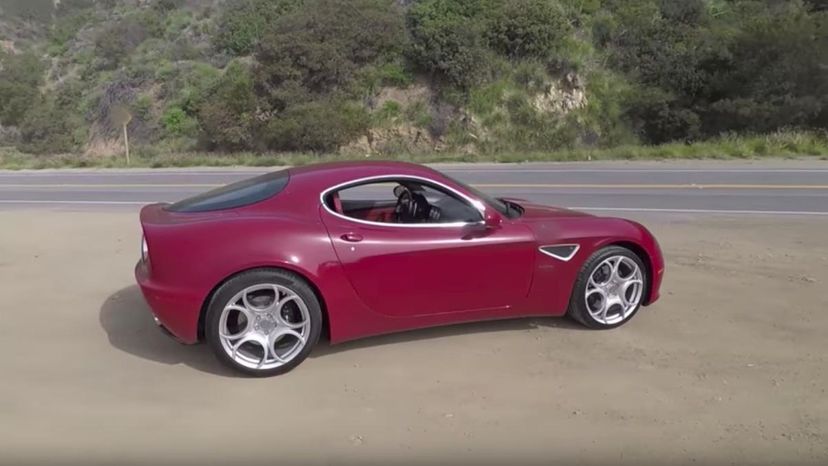
With only 500 made, the Alfa Romeo 8C Competizione is certainly sought after by lovers of the brand. This car is capable of 181 mph and is driven by a massive 4.7-liter V8 engine. The engine produces an astounding 444 horsepower. That's a lot of grunt under your foot. Opinions on the car are divided. Jeremy Clarkson of Top Gear fame trashed its performance, while other reviewers loved the 8C. Everyone loves the way it sounds!

The E-Type was first shown in Geneva in 1961. It was so popular among the press that Jaguar founder, William Lyons, had a second car sent from England overnight. Perhaps the thing that made the E-Type stand out was its beautiful body shape, designed by Malcolm Sayer. Even Enzo Ferrari was impressed, calling it "the most beautiful car in the world." Praise indeed. More than 70,000 E-Types were sold during a 14-year production run.

The Ferrari Enzo transferred knowledge the company garnered from Formula One racing into this incredible vehicle. A honeycomb chassis built out of aluminum and carbon fiber was powered by a V12 engine capable of producing 651 horsepower. At a speed of 124 mph, the Enzo produced 758 lb.60 of downforce and was capable of 0 to 60 mph in 3.1 seconds. Only 400 were built.
Advertisement

Ferrari had not produced a front-engined two-seater in 23 years before the Maranello arrived in 1996. Just over 3,000 units were produced. The Maranello was powered by a 5.5-liter engine capable of 478 horsepower. It had a top speed of 200 mph and could travel from 0 to 60 in 4.2 seconds. The Maranello name was used to pay homage to the town of Ferrari's HQ and factory.

Produced from 2004 until 2009, the Ferrari F430 was designed with research garnered from the company's F1 racing division. It included two world firsts - the differential was electronically governed, and a steering mounted switch was introduced to govern vehicle dynamics. The F430 could reach close to 200 mph and accelerate from 0 to 60 mph in 3.6 seconds

The Aston Martin One-77 was built with one goal in mind - to be the best Aston Martin vehicle ever produced. This hypercar was first seen at the Paris Motor Show in 2008. Well, only part of it, since most of the vehicle was covered. In 2009, it was finally released for full public viewing in Geneva. Only 77 of the fastest Aston Martin ever built were produced (thus, the name). The One-77 is capable of reaching speeds up to 220 mph.
Advertisement

To some, this is the most famous car in the world, thanks to its association with the early James Bond movies. The DB5 didn't change much in the way the DB4 looked, but under the hood, there were significant improvements. This included a bigger 4.0-Liter engine and a synchronized mesh 5-speed gearbox. The DB5 was offered as both a convertible and closed top. It had a top speed of 145 mph and could travel from 0 to 60 mph in about 7 seconds, fairly impressive by the standards of the 1950s.
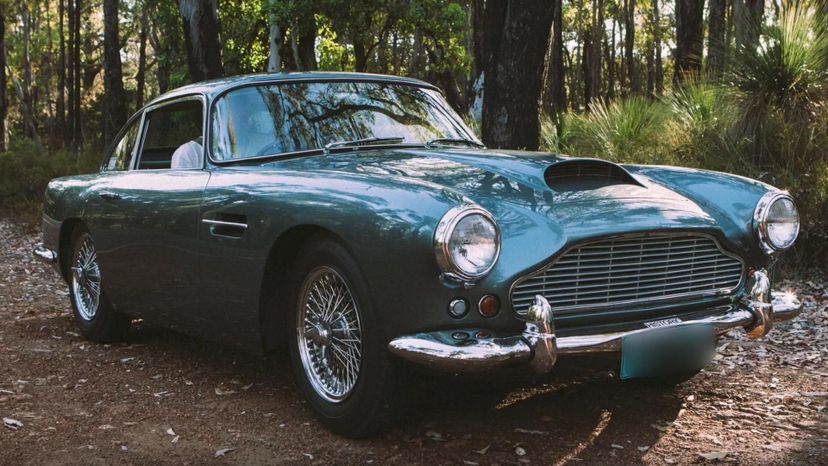
The forerunner to the legendary DB5, this Aston Martin was produced from 1958 until 1963 and was designed as a grand tourer. It was a two-seater, available as a convertible or solid top configuration. It weighed 1,300 kg but was capable of a top speed of just under 140 mph and could accelerate to 60 mph in 9.3 seconds. It was also the first production car capable of going from 0 to 100 mph back to 0 in under 30 seconds.

The XJ13 was built with racing at Le Mans in mind. Unfortunately, it never got the chance. Jaguar took too long in its development and by the time it was ready in 1967, regulations pertaining to engines had changed. Only one was ever produced, although some replicas can be found.
Advertisement
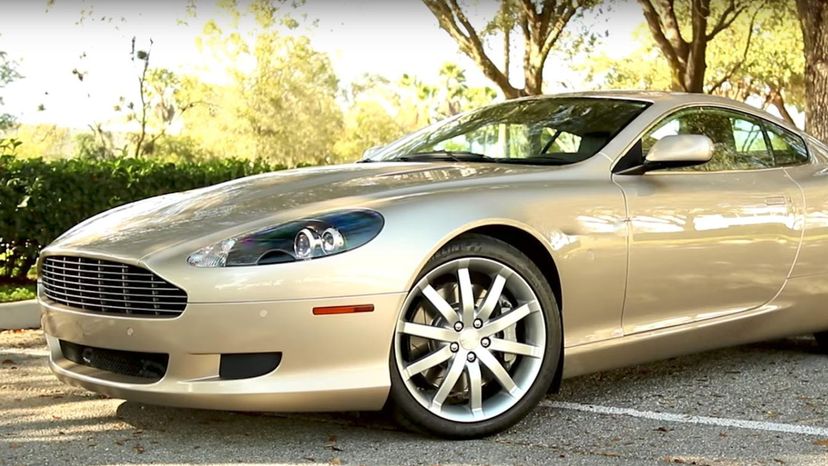
The Aston Martin DB9 was first shown to the public in 2003 at a German motor show. It followed an illustrious group of Aston Martin's carrying the DB badge, including the DB1, the iconic DB5, and the DB7. It was the first Aston designed at the company's Gaydon, U.K. headquarters and the first to be developed according to the Vertical/Horizontal principal. It is powered by a 5.9-liter V12 engine and features a six-speed gearbox.

The BMW M6 has been available in various guises over the years. The E24 was the first of the line, started in 1983. Other models were the E63/64, made from 2005 to 2010, and the F06/F12/F13, made from 2012 through 2018.
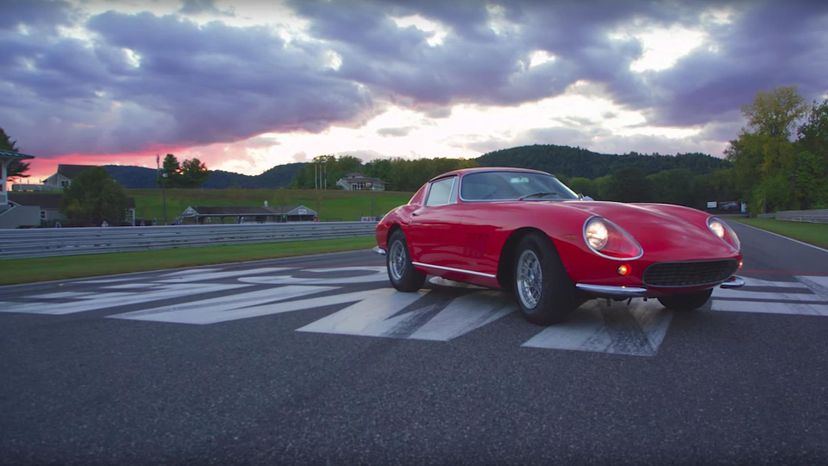
Ferrari released two different models of this vehicle: the "two-cam" model from 1964 to 1966, and the "four-cam" model from 1966 to 1968.. It was designed by acclaimed design firm Pininfarina. It features a 3.3-liter V-12 engine that produces close to 300 horsepower. Some models were incredibly lightweight thanks to bodies that were constructed out of aluminum.
Advertisement

McLaren, a highly successful Formula 1 team, built the F1 from 1992 through 1998. For a while, this was the fastest production road car, capable of speeds up to 240 mph. The F1 would go from 0 to 100 mph in just 6.3 seconds. It has a six-speed gearbox and is powered by a 627bhp BMW V12 engine. This delivers an incredible 618 horsepower. The driver sits in a central position in the F1.

The "Yellow Bird" was the brainchild of Ruf Automobile, who used a Porsche 911 as their starting point. Not only did it have a bigger engine, but RUF also focused on improving aerodynamics. Producing around 463 brake horsepower, the 'Yellow Bird' was capable of 211 mph and left a few of the big-name supercars of the 1980s in its wake.

Ferrari said this is was its most ambitious project to date. It is the first production car to feature a KERS system, a small electric motor that works in conjunction with the petrol motor. This is engineering normally only found on Formula 1 cars. The V12 engine powering the LaFerrari produces 950 horsepower and is capable of speeds over 350 km/h. It takes the LaFerrari from 0 to 60 mph in under three seconds.
Advertisement

Only 36 Ferrari 250 GTO's were ever built. So when one comes up for auction, it fetches insane prices. In fact, in 2018, one sold for $48.4 million. The GTO was designed by Giotto Bizzarrini and Sergio Scaglietti. It is powered by a Tipo 168/62 V12 engine.

Sporting a V12 engine and some unique styling, the Ferrari 330 P4 is one of the most iconic cars of the 1960s. It was a racing thoroughbred that excelled on the track, including historic first, second, and third place finishes at the 24-hour Daytona race in 1967. The engine produced 450 horsepower, propelling the car at speeds up to almost 200 mph.

While only 282 were built the XJ220 went on to become a legend. Not only was it the fastest production car at the time, but it claimed victory at the 24-hour endurance race at Le Mans. The XJ220 was designed by Jim Randle and Keith Helfet.
Advertisement

Actor Steve McQueen once owned a Jaguar XKSS. Only 16 of these were ever built. Jaguar built nine more of these cars, each with the VIN number of those lost in a fire. They will be sold to private buyers in the coming years. The XKSS has a 3.4-liter straight six engine which pushes out an incredible 250 brake horsepower.
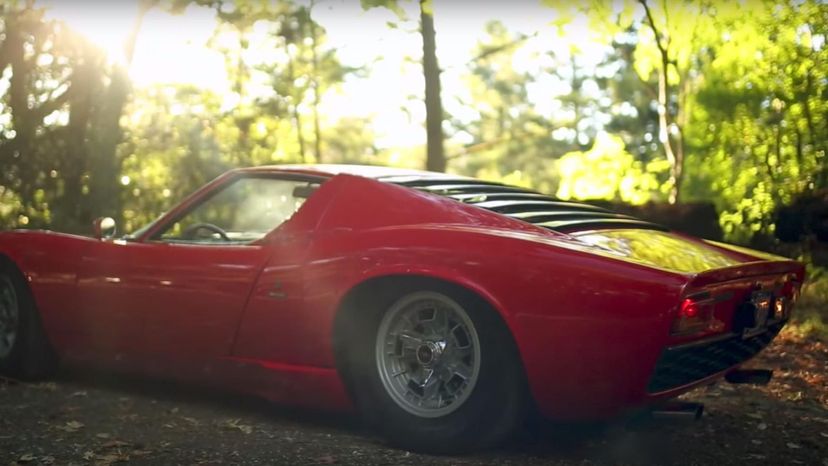
Only 764 Lamborghini Miuras were built between 1967 and 1973. For a time, it was the fastest production road car, capable of reaching 173 mph and accelerating from 0 to 60 mph in 6.7 seconds. The car was designed by Bob Wallace, Paolo Stanzani and Gian Paolo Dallara. They conceived the project in their spare time. In fact, the design for the Miura was not approved by Lamborghini's top brass. Eventually, when they saw the design concepts, they gave the go-ahead for the car to be produced.

The Ferrari Dino started with the 206 GT model and evolved into the 246 GT in the late 1960s. After making its debut in 1966 at the Turin Motor show, 152 were built by the end of 1969. Although visually the 206 and 246 were virtually the same, improvements were found under the hood, including an increased engine capacity to 2.4 liters. The 246 was also slightly longer. The Dino, named after Enzo Ferrari's son, had a top speed of close to 150 mph.
Advertisement

The Zonda first saw the light of day in 1999. This mid-engined sports car was constantly developed by Pagani, with new models arriving until production stopped in 2011. Early models featured a V12 engine capable of 444 horsepower, a top speed of 185 mph, and a 0-60 mph time of 4.2 seconds.

The Lotus Elan was powered by a relatively small, 1.6-liter engine. It was fairly lightweight, coming in at about 680 kgs. This made it capable of speeds of close to 115 mph while its engine produced around 112 break horsepower. The Elan was part of the TV series, The Avengers - Emma Peel drove one.

Introduced by Donald Healy, the Austin-Healey 100 is one of the most iconic of the British carmaker's models. The car came into existence as Healey realized the need for an offering that was cheaper than the four models his company produced. He also wanted something that would sell in America. The car was designed by Gerry Coker with input from Healey himself. The name 100 came from the fact that the car reached 100 mph in testing.
Advertisement

Alfa Romeo makes sexy cars, but the 33 Stradale might take the prize for their most beautiful vehicle. Weighing in at just 700 kgs, the 33 Stradale is capable of speeds up to 160 mph. This is thanks to a 2.0-liter engine that produces 227 brake horsepower. The car was designed by Franco Scaglione and only 18 were made between 1967 and 1969.
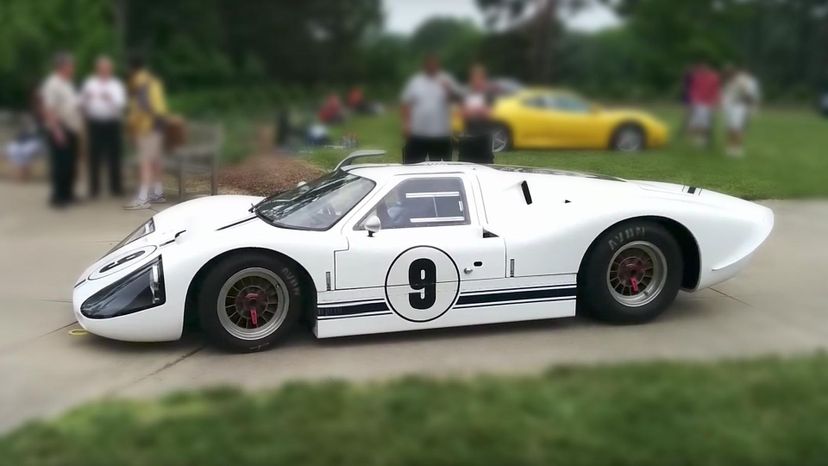
Henry Ford had always wanted to have a car at the 24-hour endurance race at Le Mans. When a deal with Ferrari went belly-up, Ford decided to make his own cars to compete and the GT40 was born. The GT40 was designed by Roy Lunn. Although initially unsuccessful in endurance racing, the car dominated the 1966 Le Mans 24-hour race. GT40s finished in first, second and third place.

The C-Type is one of the most famous models produced by this renowned British car manufacturer. It was based on an earlier model, the XK 120, but with numerous modifications since Jaguar intended for it to race at the 24-hour Le Mans event. Changes included a more powerful motor, a sleek body designed by an aerodynamicist and far better brakes. It won at Le Mans on its first attempt in 1951. Only 53 C-Types were ever built.
Advertisement

The Porsche 959 was initially intended to take part in Group B rallies but was quickly turned into a road car with blistering speed. For a brief period during the 1980s, the 959 was the fastest production road car on the planet thanks to a twin-turbo flat-six engine. Mounted in the rear of the car, it produced 444 brake horsepower. Of course, power is nothing if it is not utilized properly. The all-wheel-drive systems and other technological advances ensured the 959 distributed that power effectively.

Jaguar has a knack for designing some of the most beautiful sports cars in the world. The XK120 from the late 1940s is certainly no exception. The XK120 was not only beautiful, but it was also fast. The 120 in the name came from the fact that it hit 120 mph in testing very early on. The car was an immediate hit when shown at the London Motor Show in 1948. Jaguar was immediately inundated with orders. One of the first to receive one was actor Clarke Gable.

The Ford GT is an iconic brand. First seeing the light of day in the 1960s as the GT40, the GT was re-released in 2004. The second-generation followed in 2016, exactly 50 years since the GT40 model won the first of four Le Mans 24-hour endurance races. The second generation model includes a 3.5 liter Ecoboost engine, capable of 647 horsepower. This beast, in a carbon-fiber body, means one thing only: unbelievable acceleration and speed.
Advertisement

A two-door roadster, the MGA was produced from 1955 to 1962. It came in various guises, including the 1500, the Twin Cam, the 1600 Deluxe, and the Mark II. More than 100,000 MGAs were built during its lifetime. The MGA was used as a NASCAR racer from 1960 to 1963. It didn't win any races.

The Porsche 550 Spyder was designed by Erwin Komenda in the 1950s. It was the first real attempt at producing a racing car without a roof, specifically aimed at the roadster class. And what a racer it turned out to be, winning its first-ever race, as well as 95 victories in 370 entries. Actor James Dean was killed when his 550 Spyder crashed with another vehicle in California on Sept. 30, 1955.

The Model J, designed by Gordon Buehrig, was intended as a full-size luxury car. It was built to take on the established models at the time, including Rolls Royce. It didn't come cheap, costing around $8,500 in 1928. It was aimed at the rich and famous, who quickly fell in love with the Model J, although buyers purchased only a chassis. All the other fitments were done by a third-party company. Eventually, the company began producing complete models.
Advertisement

With better infrastructure (including roads) springing up throughout Europe in the 1950s, a certain style of car was in demand - the Grand Tourer. Such was the demand for these cars, that Maserati made its first proper attempt at making road cars. The 3500 GT was a two-seater with a front engine, rear-wheel drive layout. Four and five-speed options were available. Fuel injected engines were added on later models.

This Toyota was featured in the James Bond movie, You Only Live Twice. Yamaha actually built the first prototype of the 2000GT. It became an instant hit at the 1965 Tokyo Auto Show, and Toyota added refinements before the vehicle officially went into production in 1967. It is powered by a 2.0-Liter, six-cylinder motor capable of producing 150 horsepower. This produces a maximum speed of 135 mph.

The Auto Union Type C was used in 1936 and 1937 for Grand Prix racing. The company, an amalgamation of struggling German auto companies, including Audi, was chaired by Baron Klaus von Oertzen. He wanted to introduce the new firm as an automaker with which to be reckoned and even received funding from Adolph Hitler. The car was powered by a 6.0-liter engine capable of producing more than 500 brake horsepower. In 1936, it won six out of 12 races during the European season.
Advertisement
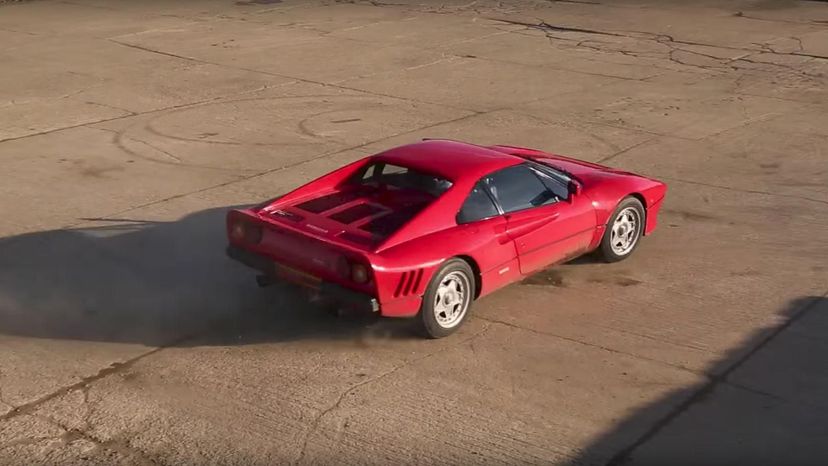
Only 272 of these were ever built. Originally, Ferrari wanted to enter it into the FIA Group B racing series, which was canceled before the car could ever compete. It then became one of Ferrari's most incredible road cars. The GTO was powered by a 2.9-liter twin-turbo V8 engine capable of producing 395 brake horsepower and speeds of up to 189 mph.

The America series resulted in seven different models produced by Ferrari between 1950 to 1967. In total, only 173 cars were made, including six 342s designed by Giovanni Michelotti. Other models included the 340, 410 Superamerica, 500 Superfast, and the 365 California.

Only 40 of these vehicles were ever produced and in its day. It was the fastest production road car available, thanks to a massive 7.1-liter, six-cylinder engine. This produced in the region of 250 to 300 horsepower and propelled the car at speeds of up to 120 mph. Incidentally, this Mercedes was designed by Ferdinand Porsche, who worked for Daimler-Benz at the time.
Advertisement

Between 1956 and 1959, BMW only made 252 of these two-door convertibles. Today, it is one of the most coveted cars from the 1950s. It was designed by Albrecht Goertz and quickly became popular with the rich and famous. Elvis Presley owned a 507. Other famous owners included race driver, John Surtees, and Bond girl, Ursula Andress.

This rear-wheel-drive coupe has a 3-speed gearbox. The third-generation Eight Coupe was powered by a 255.4 cubic-inch motor. Its sleek looks quickly led it to become the hot rod of choice among car lovers, many of whom chose to improve the performance of their vehicles to make them even faster. The Coupe remains a very popular hot rod.